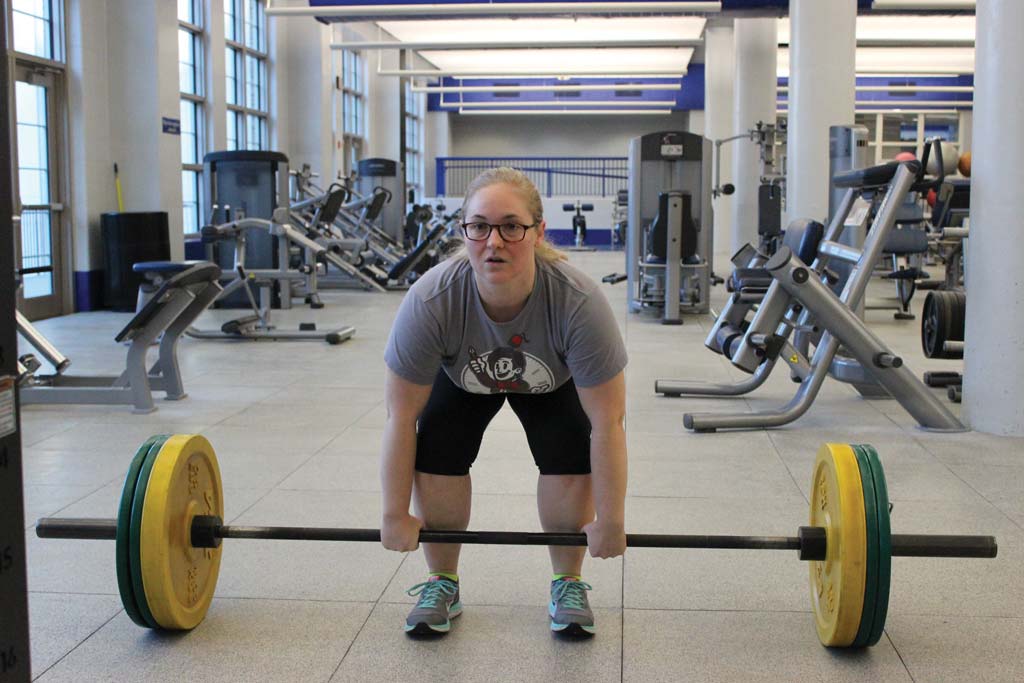Campus recreation is growing beyond just intramural sports and exercise classes. Through the implementation of well-being programs, campus rec departments across the country are helping students improve their overall health.
Since there’s more to being healthy than just exercising, well-being programs integrate nutrition services, disease prevention and other dimensions to maintaining a healthy lifestyle.
Expanding your offerings to include a well-being program provides another way to engage students by helping them gain a better understanding of healthy lifestyles.
Below, Leigh Ann Garstecki, the director of fitness and wellness at Duke University, and Josh Downing, the director of student wellness and the health and recreation complex (HRC) operations at Butler University, share the successes and missions of their respective schools’ well-being programs.
Girl Power: No Limits

The Student Affairs Wellness Initiative at Duke University provides education and resources to help students make healthier lifestyle choices. Practicing prospective health care, which focuses on disease prevention instead of disease response, the Wellness Initiative equips students with risk assessments and coaching.
In its early days, however, this initiative needed a boost from a more specifically targeted program. “Girl Power: No Limits was the main program to jumpstart our Wellness Initiative,” said Garstecki. “It’s a free program for female students, consisting of monthly discussions and activities revolving around different areas of wellness: physical, emotional, spiritual, financial and environmental.”
Those discussions and activities — which include a camping trip and smoothie making — increased female student participation. It also helped Duke form a blueprint for success with other well-being programs.
That plan has involved training sessions aimed at educating and preparing student staff members for pioneering Duke’s well-being efforts on the front-lines.
“Part of our focus is to help our trainers and instructors have a more integrated approach to wellness,” said Garstecki. “We held in-service trainings last year that centered on mindfulness. Our goal was to give them tools to use personally but also pass on to their clients and participants.”
In addition to student staff acting as ambassadors for the Wellness Initiative, Garstecki shared it’s been critical to have help from other organizations across campus.
“Campus partnerships are key,” said Garstecki. “The more people you have mentioning these programs to students and reiterating their importance, the more likely they are to be interested.”
BUBeWell

“We are implementing a new strategy called ‘BUBeWell’ where we’re bringing all our resources and programs together and speaking the same language,” said Downing. “We provide students many robust opportunities to develop, both inside and outside the classroom, through each of the eight dimensions of the BUBeWell model.”
Those eight dimensions of well-being span across different organizations and include mind and body, diversity and inclusion, intellectual well-being, social well-being, service and community, career and life skills, meaning and purpose, and environmental well-being.
“We collaborate with Residence Life in training RA’s and infusing champions within each floor as resources for students,” said Downing. “My hope is creating an organic network of champions on campus.”
Access to a network of well-being resources all over campus is critical. Students are rarely involved in just one organization always at one place on campus, so it’s important to engage them with well-being programs wherever they might be.
In fact, Downing realized one of the biggest obstacles to getting students involved in well-being programs was being scattered across different parts of campus.
“We have operated in our own silos for a long time and it’s no fault to anyone, just how we’ve been structured,” said Downing. “Our new approach will eliminate this. We want to make sure people understand not one person or department owns well-being — we all own it.”
And as the entire campus continues to “own” new and evolving well-being programs, the student population will benefit. “Our mission statement for BUBeWell says it’s the foundation for a transformative and holistic student experience,” said Downing. “We foster a positive environment that helps students grow, learn and be the best version of themselves.”










